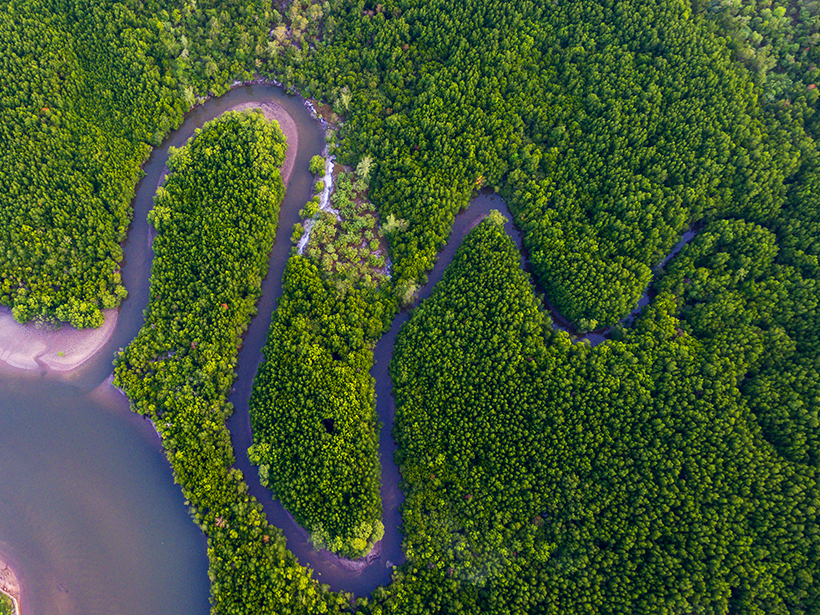“Water problems are few but basic,” wrote Raymond L. Nace, a research hydrologist at the U.S. Geological Survey, in 1969. Scientists in his field had come together 5 years earlier to launch the International Hydrological Decade (IHD), a program by the United Nations Educational, Scientific and Cultural Organization. Nace, who chaired the program committee, was ready to offer an update on their progress.
As AGU looks back this year in celebration of our Centennial, one of our prouder moments is the significant role we played in guiding U.S. involvement in the IHD.
Much of that progress was a massive push of awareness by focusing research on areas of the world that best exemplified those few but basic problems Nace identified: “distribution in space (too much or too little); distribution in time (too much in some seasons or years and not enough in others); chemical quality [from naturally occurring minerals]; and pollution.” Groups were formed in nearly 100 countries. They looked at issues affecting their own neighborhoods and, more importantly, began the first major international collaboration to learn more about how those processes pushed and pulled each other around the globe.
As AGU looks back this year in celebration of our Centennial, one of our prouder moments is the significant role we played in guiding U.S. involvement in the IHD. Our organization brought the idea back from discussions during the 1960 Helsinki meeting of the International Union of Geodesy and Geophysics, forming a committee that led to the 1962 formation of the Conference of American Hydrologists. That group published a report “that represented a major contribution to the visibility of scientific hydrology,” as we wrote in the pages of Eos in May 1990.
The groundwork laid during that era brought us to today, when leaders in most nations understand that the need for sound water policy is paramount, not simply because they’ve suffered floods or droughts but because scientists have been able to give clarity regarding the causes of these hydrologic extremes and how they’re connected to both faraway systems and human actions very much under their control.
We need to turn our attention to compound events—when two or more hazardous events or climate variables collide—which are largely overlooked today in disaster risk analysis.
Of course, the complexity of these processes can still be staggering. Our March cover story explores what happens when these extremes collide. Scientists and governments have given much attention in the past few decades to discrete natural hazards and the toll they take on a population. Floods alone, between 1980 and 2013, have taken more than 200,000 lives and caused $1 trillion in damage around the globe. Now, a group of scientists argues, we need to turn our attention to compound events—when two or more hazardous events or climate variables collide—which are largely overlooked today in disaster risk analysis.
Meanwhile, even when scientists have been able to create solid models, climate change continues to shake up everything. The rapid thawing of permafrost has far-reaching effects on hydrologic and geomorphologic processes. A group of scientists has developed a new Permafrost Modeling Toolbox to help research these questions. Designed for education, industry research, and the academic community, the three models in the toolbox allow users to calculate permafrost in specific regions, create maps of future permafrost, and compare models of different complexities.
Long before the International Hydrological Decade, AGU understood the great need to study these globe-spanning processes. In 1930, the Section of Hydrology was officially established, drawn out from the special committees that were asking increasingly important questions about the world. As AGU positions itself for the next century, we are eager to support and listen to the scientists who continue to reveal our planet’s intricate systems.
—Heather Goss (@heathermg), Editor in Chief, Eos
Citation:
Goss, H. (2019), Everything is connected, Eos, 100, https://doi.org/10.1029/2019EO117647. Published on 04 March 2019.
Text © 2019. AGU. CC BY-NC-ND 3.0
Except where otherwise noted, images are subject to copyright. Any reuse without express permission from the copyright owner is prohibited.
Text © 2019. AGU. CC BY-NC-ND 3.0
Except where otherwise noted, images are subject to copyright. Any reuse without express permission from the copyright owner is prohibited.

